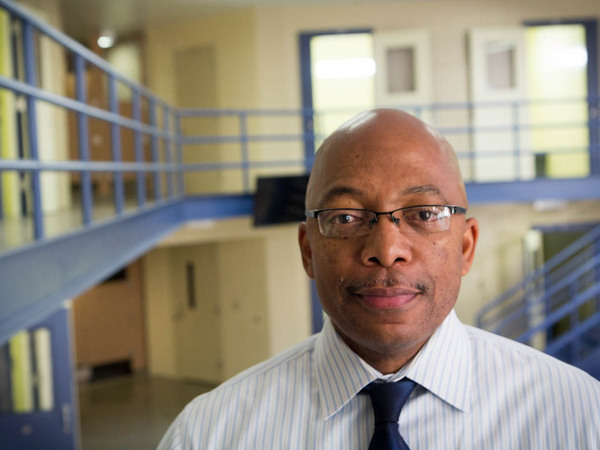Some youths find probation more challenging than juvenile detention
Go Deeper.
Create an account or log in to save stories.
Like this?
Thanks for liking this story! We have added it to a list of your favorite stories.

Juvenile justice reformers have tried for years to figure out what works to help rehabilitate youth in trouble, and a recent shift away from locking kids up has been at the forefront of reform efforts. One of the most common alternatives to incarceration is to order kids directly into probation, instead of juvenile hall.
But the goals of these alternative approaches don't always match the reality — and disproportionately impact youth of color.
The juvenile hall in San Leandro, Calif., has 360 beds — most of which were full when the detention center opened eight years ago. Today, the facility is half-empty.
Nationwide in the past 16 years, juvenile incarceration dropped by half. Part of the reason? Judges across the country, including in Alameda County, are ordering young offenders into the probation system as an alternative to locking kids up.
Turn Up Your Support
MPR News helps you turn down the noise and build shared understanding. Turn up your support for this public resource and keep trusted journalism accessible to all.
That's what happened to one 18-year-old, whom Youth Radio is not naming in order to protect his privacy and his juvenile records, which are protected by the law. He stole two pairs of sneakers, worth $85 total, when he was 15. This was his second arrest for what the court found to be a minor offense.
"And from there everything changed, because that was my first time on probation," he says.
Instead of sending him to juvenile hall, a judge put him on probation, which can last until age 21. His court orders included nearly two-dozen conditions he had to follow, says Kate Weisburd, his attorney.
"Attend classes on time and regularly," she read. "Be of good behavior and perform well ... be of good citizenship and good conduct."
Weisburd, who co-directs a youth justice program at the East Bay Community Law Center in Berkeley, says that while adults on probation mostly have to avoid committing a new crime, kids on probation have to abide by these sometimes subjective requirements — or be locked up.
The 15th order, "obey parents and guardians," was one that tripped up the teen who took the shoes, moving him into juvenile hall. And the electronic monitor on his ankle sent him to the hall multiple times.
"I just wanted to go outside and take a walk or something, but then I'd get in trouble," he says.

His mom says the GPS tracking was confining and hard on him and the family.
"My son, he doesn't want to eat all day. He wants to only sleep," she says. "It was really hard. He doesn't have a lot of ... hope? Esperanza? I feel sad when I see my son like that."
Nearly every state allows some form of electronic monitoring for juvenile offenders.
Last year probation violations were reported as the most common reason kids were incarcerated in Yolo County, Calif. Brent Cardall, the chief probation officer there, says some of that is beyond his control.
"We're not the judge and we don't tell the youth where they go and what they do," he says. "We enforce the orders of the court ... and we have a mandate to report those violations to the court."
Cardall's county is working on reforms to get better outcomes for youth in the system, implementing new programs that support the whole family, but he says his primary focus is on changing behavior.
David Muhammad works with numerous probation departments across the country on reform, and he says the alternatives to jail often aren't achieving their original goals.
"Many of the young people, when they first engage in the system, would be considered low-risk — and involvement in the system increases their risk," he says. "There is a mountain of research that says, when the juvenile justice system touches a young person, that their likelihood of dropping out of school skyrockets, their likelihood of later being involved in the adult criminal justice system skyrockets."
And Weisburd says putting kids in the probation system can lead to further entanglement in the justice system, rather than providing an alternative to it.
"It is ironic that electronic monitoring is seen as an alternative to detention, yet is often what leads our clients to be detained," she says.
In some parts of the country, almost half of incarcerated youth — the majority of them kids of color — are behind bars because of technical violations committed while on probation. This story was produced by Youth Radio as part of its juvenile justice series, Unlocked. Copyright 2019 NPR. To see more, visit https://www.npr.org.


